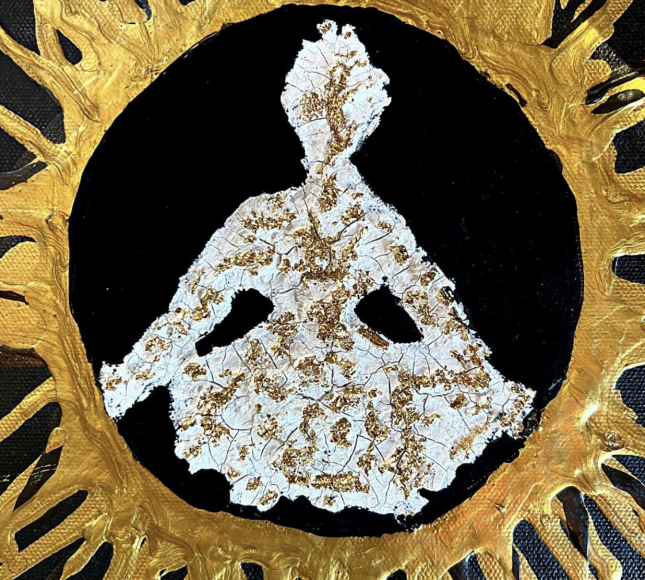AHANKAR (hankar as it is commonly pronounced in Punjabi) is a compound of Sanskrit aham (I) and kar (‘maker’) and means I-maker, i.e. what individuates the person as I. It stands for egotism, egoism, self conceit, self centredness, vanity or simply pride. Other synonyms used in the sacred texts of the Sikhs are man, abhiman, garab, guman, ahang, ahammeu, ahambudh, haumai and khudi. Pride is regarded as an undesirable trait in all ethical systems; it is counted among the seven deadly sins in the religious literature of the West.
Sikhism considers it not as a metaphysical myth as is done in Sankhya and Buddhism but as one of the five common human weaknesses or evils. Ahankar is vanity, elation or exultation arising from an exaggerated view of one\’s own merit. The merit may consist in real or presumed intellect, scholarship, physical strength or beauty, worldly rank and possessions or even spiritual accomplishments. Whatever the source, ahankar is counted a frailty. Says Guru Amar Das, “it is a deadly disease and the cause of the unending cycle of birth, death and rebirth” (GG, 592).
Again, “Pelf is like poison, for it engenders arrogance.None sunk in arrogance wins approval” (GG, 666). In another hymn, Guru Amar Das declares: “Egoity is the adversary of nam (absorption in God`s Name); the two cannot abide together” (GG, 560). Guru Arjan thus addresses ahankar personified: ” 0 thou, the cause of birth and death: 0 thou, the soul of sin: Thou for sakest friends and slowest enmities: Thou spreadest the net of illusion far and wide”(GG, 1358). Even virtues and pieties are rendered sterile if accompanied by ahankar, as says Guru Tegh Bahadur, Nanak IX: ” Pilgrimages, fasting and charities if they lead to guman (pride) go waste like the bath by an elephant (who after bathing besmears his body with dirt)” (GG, 1428).
Remedies suggested in Sikhism are humility and seva (self abnegating deeds of voluntary service). The two are complementary virtues. For Guru Arjan humility is a weapon against not only ahankar but all vikars or evil tendencies. Says he, “Humility is my mace, being the dust of the feet of all, my dagger. These weapons vanquish all vices” (GG, 628); Seva is a highly prized virtue in Sikhism. To quote Guru Arjan again: “I feel blest rendering service to God`s servants by drawing water for them (from the well), by swinging the fan over their heads (in holy congregation) and by grinding corn (for their meals).
State, territory and mundane offices are of little value” (GG, 8ll). Another remedy is to be aware of the insignificance and transience of man in the context of cosmic vastness. Kabir wonders at the vanity of men who pride themselves upon trifles. “Even kings mightier than Ravana,” he says, “perished in a twinkle”(GG, 1251) .Judicious self respect and a sense of honour should not however be mistaken for pride. Humility does not rule out the former. Says Guru Nanak: “If one loseth one’s honour, all that he eats is unclean” (GG, 142).
References :
1. Kahn Singh, Bhai, Gurmat Sudhakar. Paliala, 1970
2. Gunnat Prabhakar. Patiala, 1970
3. Jodh Singh, Bhai, Gurmati Nirnaya. Lahore, 1932
4. Caveeshar, Sardul Singh, Sikh Dharam Darshan. Patiala, 1969
5. Sher Singh, Philosophy of Sikhism. Delhi, n.d.
6. Taran Singh, ed.. Teachings of Guru Nanak Dev. Patiala, 1977
7. Nripinder Singh, The Sikh Moral Tradition. Delhi, 1990
Ahankaar: The Ego as a Spiritual Obstacle
Introduction
Ahankaar, meaning ego or pride, is considered one of the Five Evils in Sikh philosophy, along with kām (lust), krodh (anger), moh (attachment), and lobh (greed). It represents the sense of self-importance and arrogance that blinds individuals to the reality of interconnectedness and Divine presence. The ego, while a natural facet of human identity, becomes destructive when it fosters pride, superiority, and detachment from humility.
Understanding Ahankaar
Ahankaar arises when an individual becomes overly consumed with their accomplishments, possessions, or status, leading to a distorted sense of self-worth. While confidence and self-awareness are healthy traits, ahankaar crosses the line into arrogance, self-centeredness, and entitlement. This prevents individuals from cultivating genuine relationships, selflessness, and spiritual growth.
Guru Nanak Dev Ji explains that the ego distances individuals from the Divine, as it causes them to prioritize their own identity over their connection with the Creator. Ahankaar fuels the illusion of control and independence, undermining the truth that all existence stems from Divine will.
The Consequences of Ego Ahankaar obstructs the spiritual path by fostering attachment to worldly power and pride. It breeds divisions, conflicts, and disrespect for others, undermining the Sikh principle of equality (sarbat da bhala). Guru Nanak warns in the Guru Granth Sahib, “The proud are consumed by their ego; they cannot find the path of liberation” (GG, 1092). Ego also disrupts inner peace, as the constant pursuit of validation and superiority creates restlessness and dissatisfaction.
Ahankaar obstructs the spiritual path by fostering attachment to worldly power and pride. It breeds divisions, conflicts, and disrespect for others, undermining the Sikh principle of equality (sarbat da bhala). Guru Nanak warns in the Guru Granth Sahib, “The proud are consumed by their ego; they cannot find the path of liberation” (GG, 1092). Ego also disrupts inner peace, as the constant pursuit of validation and superiority creates restlessness and dissatisfaction.
Furthermore, ahankaar blinds individuals to their flaws and prevents them from seeking guidance or forgiveness. This spiritual arrogance makes it difficult to engage in honest introspection and humility, both essential for growth and liberation.
Antidote to Ahankaar: Humility and Surrender
The Sikh Gurus emphasize humility (nimrata) as the remedy to ahankaar. Humility involves recognizing one’s dependence on the Divine and respecting the inherent equality and worth of all beings. Guru Arjan Dev Ji says, “Egotism is darkness; in egotism, no one can find the Lord” (GG, 560). Letting go of ego enables individuals to embrace virtues such as compassion, gratitude, and service.
Another essential practice is hukam—acceptance of Divine will. By surrendering to the Creator and acknowledging that all achievements are gifts from the Divine, individuals can overcome the illusion of ego and cultivate a deeper sense of purpose.
Living Beyond Ego
Sikhism advocates for a balanced life that avoids both excessive self-importance and complete self-negation. The concept of seva (selfless service) is central to this, as it allows individuals to focus on uplifting others rather than seeking personal gain. Meditation (naam japna) and reflection on Gurbani (Sikh scriptures) also help transcend ego by fostering spiritual awareness and connection to the Divine.
Conclusion
Ahankaar, or ego, is a formidable barrier to spiritual growth and harmony. Overcoming it requires humility, surrender to Divine will, and dedication to service and equality. As Guru Nanak reminds us, “Ego is a deep darkness; it keeps one away from the Lord” (GG, 1023). By letting go of ahankaar, individuals can embark on a path of liberation, where compassion, wisdom, and connection to the Divine become guiding principles.







